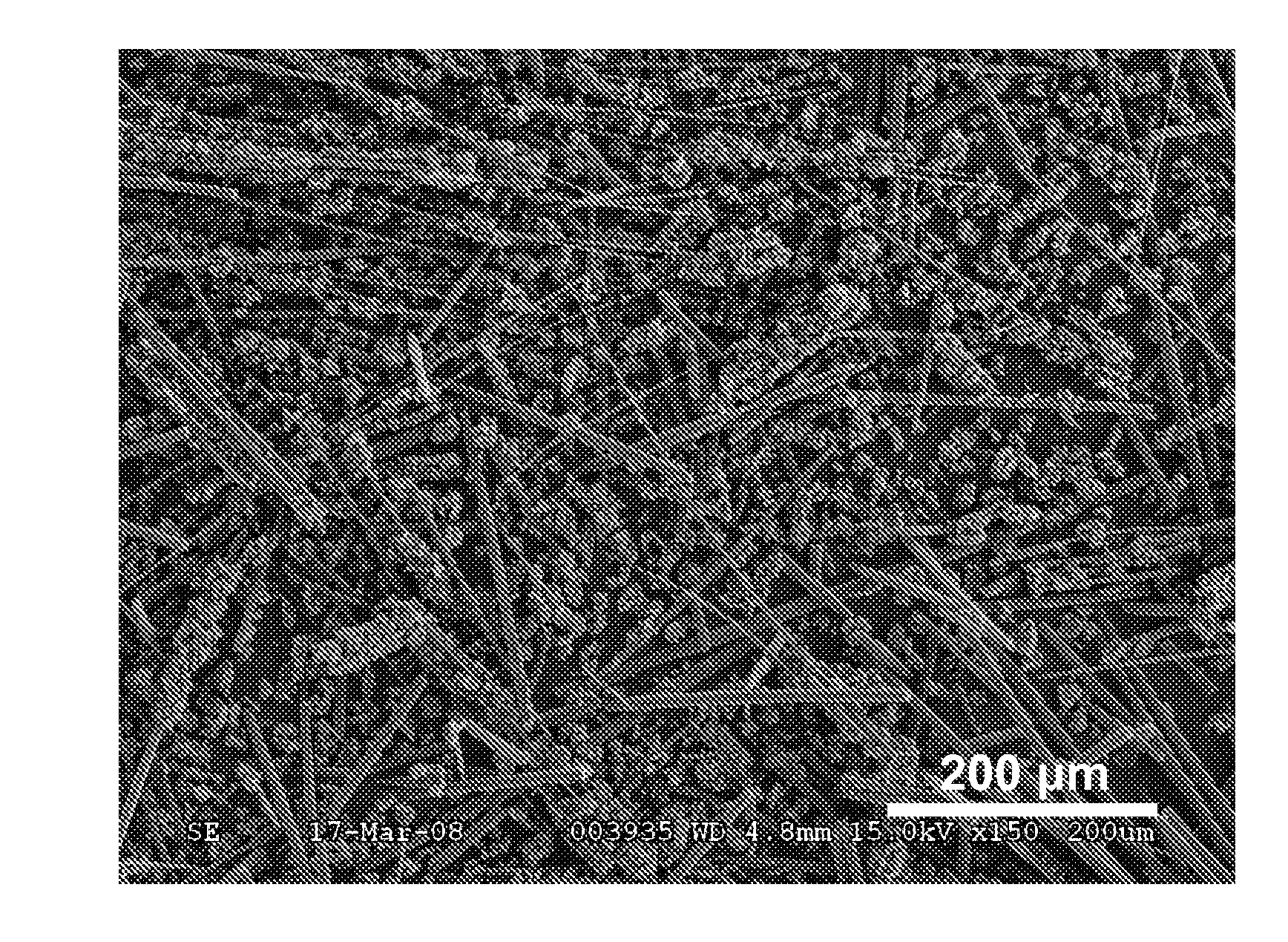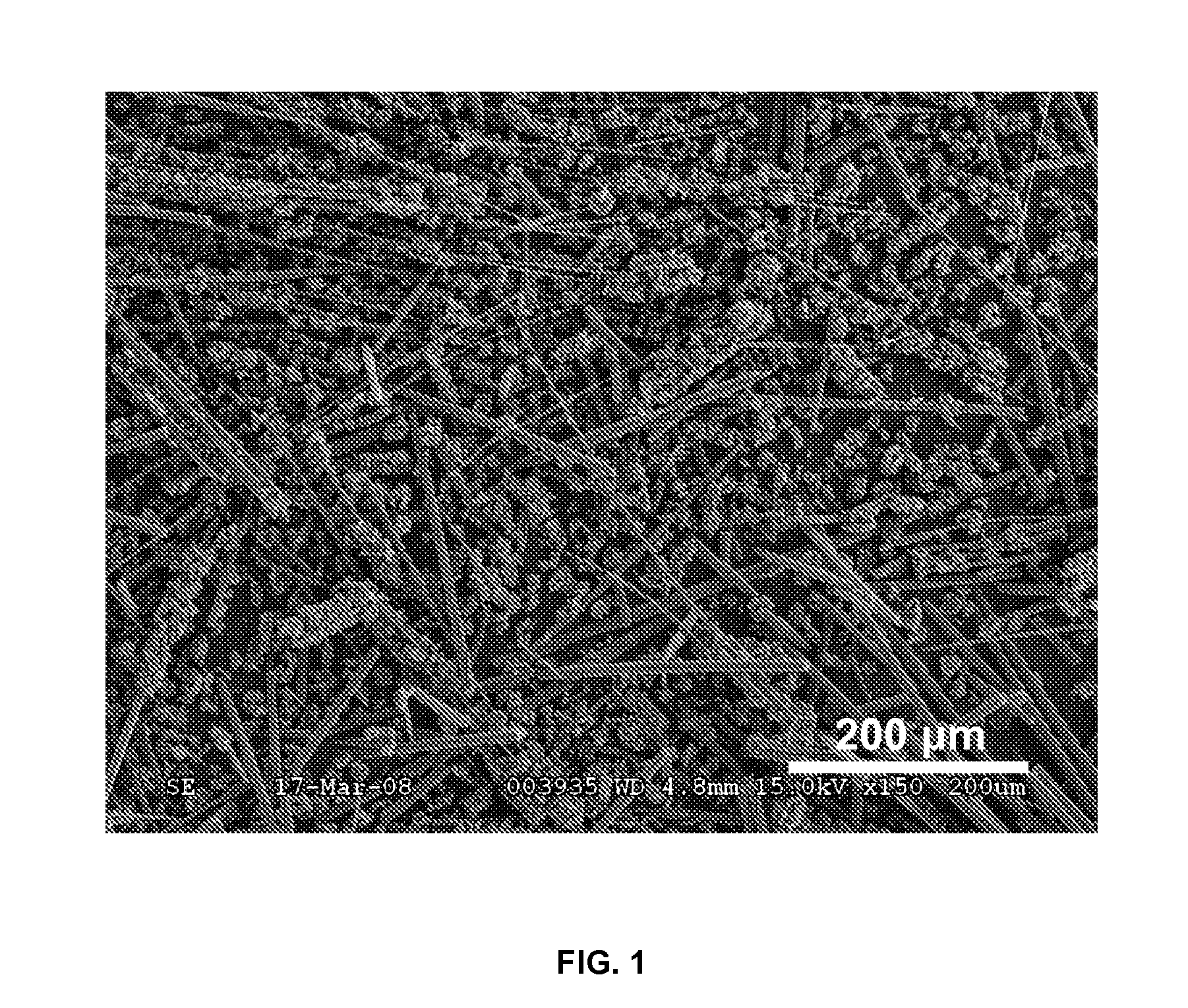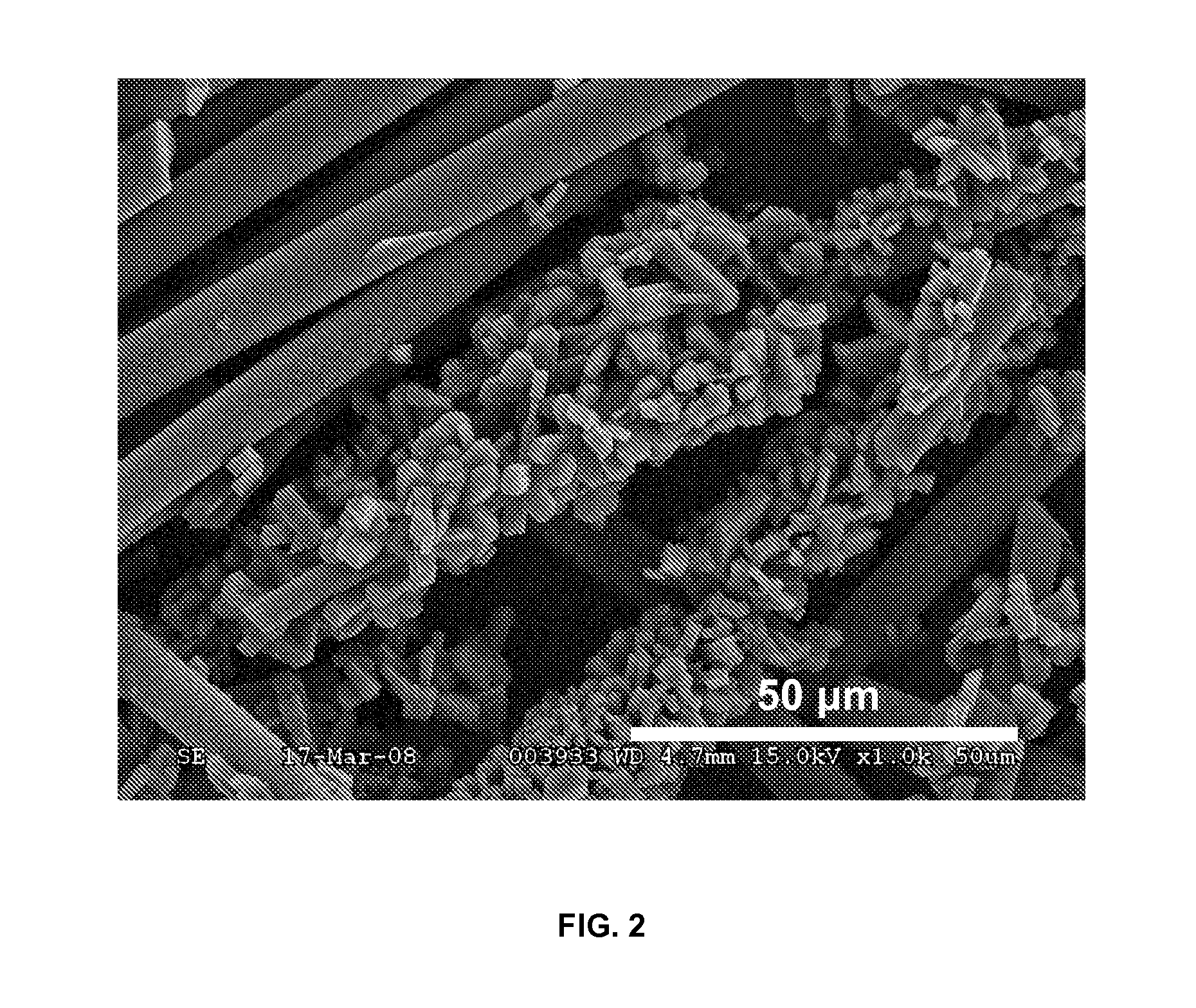Fibrous substrate-based hydroprocessing catalysts and associated methods
a hydroprocessing catalyst and substrate technology, applied in the direction of physical/chemical process catalysts, silicates, silicon compounds, etc., can solve the problems of poor catalyst activity and stability, significant influence on the overall material and operating costs required in the catalytic hydroprocessing process, etc., and achieve the effect of improving the physical surface area
- Summary
- Abstract
- Description
- Claims
- Application Information
AI Technical Summary
Benefits of technology
Problems solved by technology
Method used
Image
Examples
example 1
[0075]Hydroprocessing Catalyst Substrate Preparation from Silica-Rich Fibrous Material
[0076]To a 125 milliliter TEFLON liner, 1.8 grams of ethylenediamine (EDA), 6.0 grams of triethylamine (TEA), and 1.08 grams of DI water were added. A 3.0 gram sample of pre-calcined REFRASIL® (HITCO Carbon Composites, Gardena, Calif.), amorphous silica-based fibrous textile was placed on top of a perforated TEFLON® holder. The textile was rich in silica, with a measured Si content of 46.3% by weight on a volatile-free basis. The amounts of Al, Ti, and Ca present in the textile were approximately 0.6%, 0.5%, and 0.2% by weight, weight, respectively. Smaller amounts of the elements Co, Cr, Cu, Fe, Ga, K, Li, Mg, Mn, Mo, Na, Ni, P, Sb, Sn, Sr, V, Zn, and Zr were also measured. The holder and silica-rich, fibrous textile were then positioned inside the liner such that no direct contact between the liquid and solid fabric could occur, although vapors from the liquid phase could pass through and contact...
PUM
| Property | Measurement | Unit |
|---|---|---|
| molar ratio | aaaaa | aaaaa |
| molar ratio | aaaaa | aaaaa |
| diameters | aaaaa | aaaaa |
Abstract
Description
Claims
Application Information
 Login to View More
Login to View More - R&D
- Intellectual Property
- Life Sciences
- Materials
- Tech Scout
- Unparalleled Data Quality
- Higher Quality Content
- 60% Fewer Hallucinations
Browse by: Latest US Patents, China's latest patents, Technical Efficacy Thesaurus, Application Domain, Technology Topic, Popular Technical Reports.
© 2025 PatSnap. All rights reserved.Legal|Privacy policy|Modern Slavery Act Transparency Statement|Sitemap|About US| Contact US: help@patsnap.com



